A team of Inrap archaeologists is currently carrying out a rescue excavation on an eight-hectare site in Artenay, in north-central France, during the course of which they uncovered two Neolithic era burials dating to between 5500 and 3700 BC.
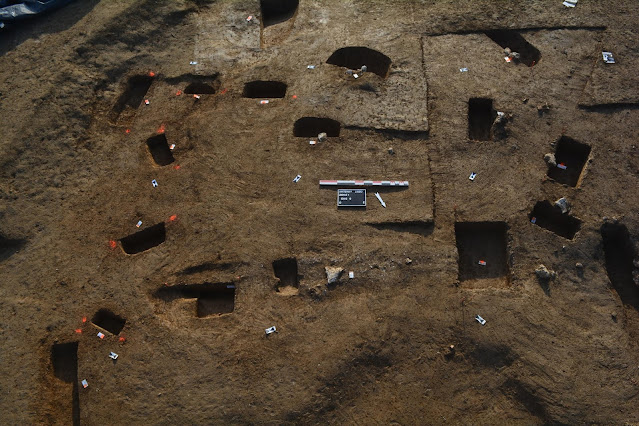 |
| Excavation of a Gallic building [Credit: Inrap] |
One of the burials is particularly surprising, since the deceased, in a flexed position, was holding a perforated deer antler between his arms. At the same time, under his skull lay an axe polished from white flint, decorated with ochre and still inserted in its deer antler sheath. This axe turned out to be an adze, a tool used for felling trees and shaping wooden objects (buckets, crockery, dugout canoes, etc.). Its unusual presence in an individual grave constitutes a strong cult marker.
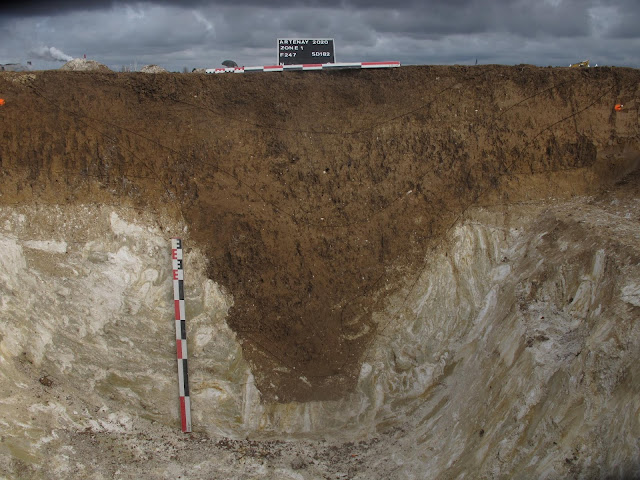 |
| Ditch [Credit: Inrap] |
In addition, two very large complexes surrounded by wide ditches (2.50 m deep and 7 m wide) have been uncovered. Within these spaces of 7,200m2 and 4,300m2, numerous buildings were erected on large supporting posts. The shape of the structures evokes a Gallic rural complex with its granaries, stables, houses, etc. The settlement dates from the 1st century BC to the 2nd century AD.
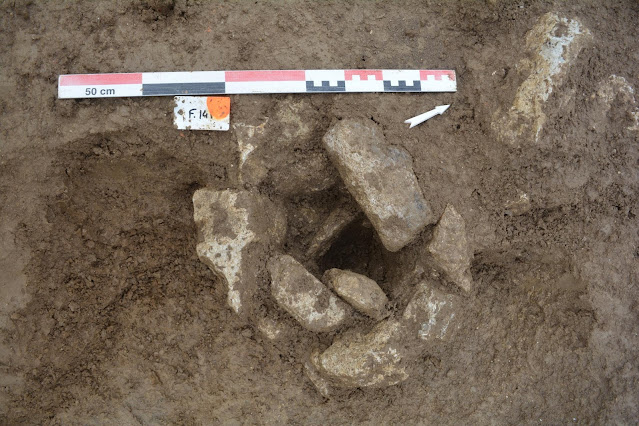 |
| Post hole with wedge stones [Credit: Inrap] |
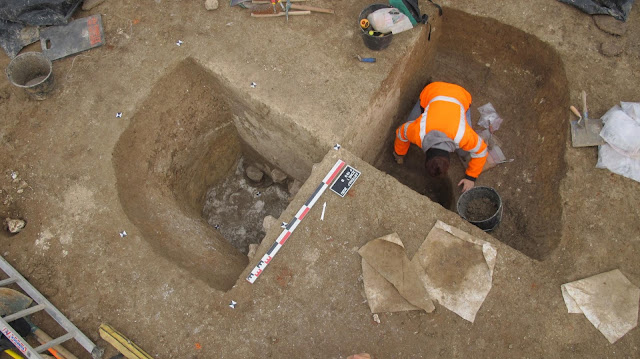 |
| Excavation of an storage pit [Credit: Inrap] |
From the 2nd century AD onwards, the organisation of the southern complex underwent profound changes and stone masonry architecture appeared. The buildings were then covered with tiles. Wooden and stone architecture were in use at the same time. During this period, the site of Artenay seems to have been the centre of important agropastoral activities.
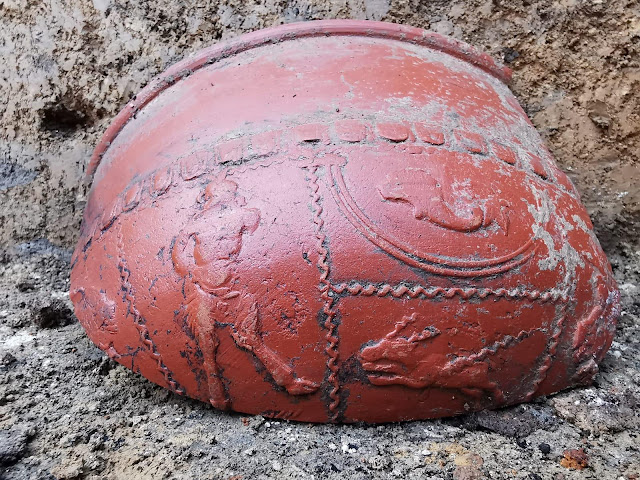 |
| Gallo-Roman sigilated vase [Credit: Inrap] |
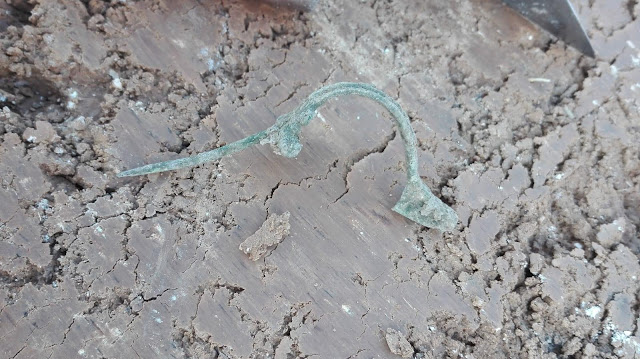 |
| Fibula [Credit: Inrap] |
The discovery of knives, forks, spindle whorls, weights, tableware and ovens also reveals artisanal activities. These elements, as well as the discovery of certain fragments of painted ornaments and ceramics, testify to the high social status of the master of the site and his financial power and raise the question of the status of the site: a farmstead and its master house?
Amongst the finds, a fragment of a Celtic-style statue is a major discovery. On this limestone block is sculpted a figure with hands placed on his stomach and an arm adorned with a twisted bracelet. On his back, two deer are probably fighting. Gallic statuary is rare in France, and the one from Artenay is unique to the Central region. This statue, once broken, was thrown into one of the ditches.
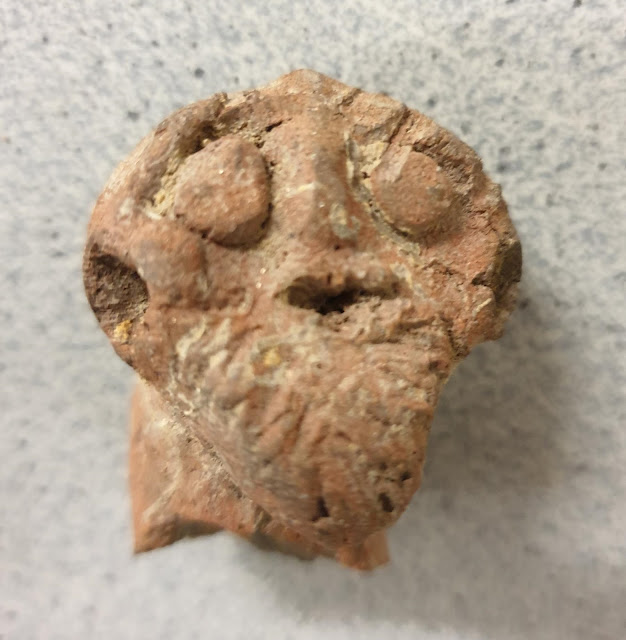 |
| Detail view of a ceramic figure. This representation of a bearded man with particularly prominent eyes and ears is unique [Credit: Inrap] |
A second figurine, in terracotta, was found. It represents a bearded character, whose eyes and ears are highlighted. This object, also in the Celtic style, has no known parallel but has the same characteristics as those recently discovered by Inrap at Tremuson (Cotes d'Armor).
Source: Inrap [trsl. TANN; July 07, 2021]
Support The Archaeology News Network with a small donation!

TANN
from Hacker News https://ift.tt/3kzbFoK
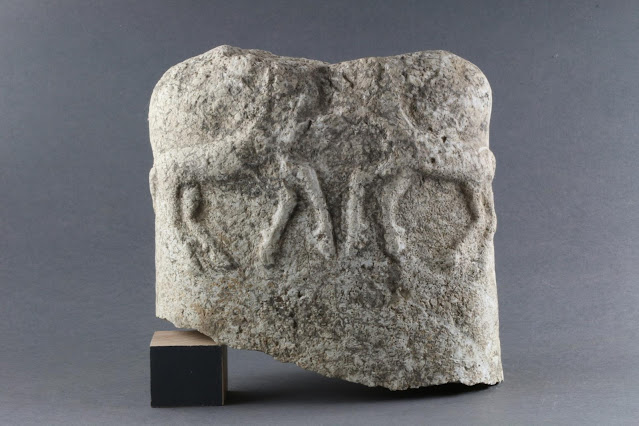
No comments:
Post a Comment
Note: Only a member of this blog may post a comment.